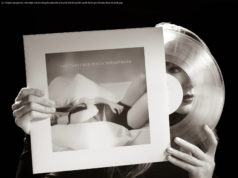Across Illinois, craftsmen quietly build some of America’s most storied musical instruments, including harps, violins and organs.
Little about the utilitarian brick building on the city’s industrial Near West Side hints at what’s made inside.
Here, where freight trucks and elevated trains rumble by all day, it’s common for passersby to ask: “Do you really make harps in there?”
Yes, Lyon & Healy, does make harps. And not just any ol’ harps, but arguably, the world’s finest instruments.
The Chicago Symphony Orchestra has two gold-leafed Prince William Concert Grand harps — each valued at about $93,000. People come from the farthest reaches of the planet — South America, Europe, Singapore, Tasmania — to buy them.
And Lyon & Healy isn’t alone. In factories across Illinois, craftsmen are quietly building some of America’s most storied musical instruments, including violins and even pipe organs.
An employee at the Lyon & Healy harp factory works on the “action,” a mechanical device made up of some 1,500 parts that allows the harpist to control the instrument’s pitch.| Brian Rich/Sun-Times
Bostonians George W. Lyon and Patrick J. Healy came to Chicago in the soggy spring of 1864. They stared out at a mud-caked Clark Street downtown, with its rickety wooden buildings, and saw — possibility.
“It was a cow town back then,” says Steve Fritzmann, Lyon & Healy’s national sales manager. “But they saw the railroads. They saw the future, the distribution. It was a brilliant move.”
What began as a sheet music shop at the corner of Washington and Clark grew into a manufacturer of everything from mandolins to violins to guitars and, beginning in 1889, harps.
An employee completes the chisel work on the slot in the harp’s column.| Brian Rich/Sun-Times
Today, Lyon & Healy makes about 1,000 harps annually, much like they were made 130 years ago — mostly by hand.
Home
United States
USA — Music Music to Illinois' ears: Instruments made here shipped around the world






